PRESTO PLANS
Sent straight to your inbox
CLICK HERE TO ACCESS
Sign up to receive 10 ready-to-use ELA resources your students will love!
10 FREE ELA RESOURCES
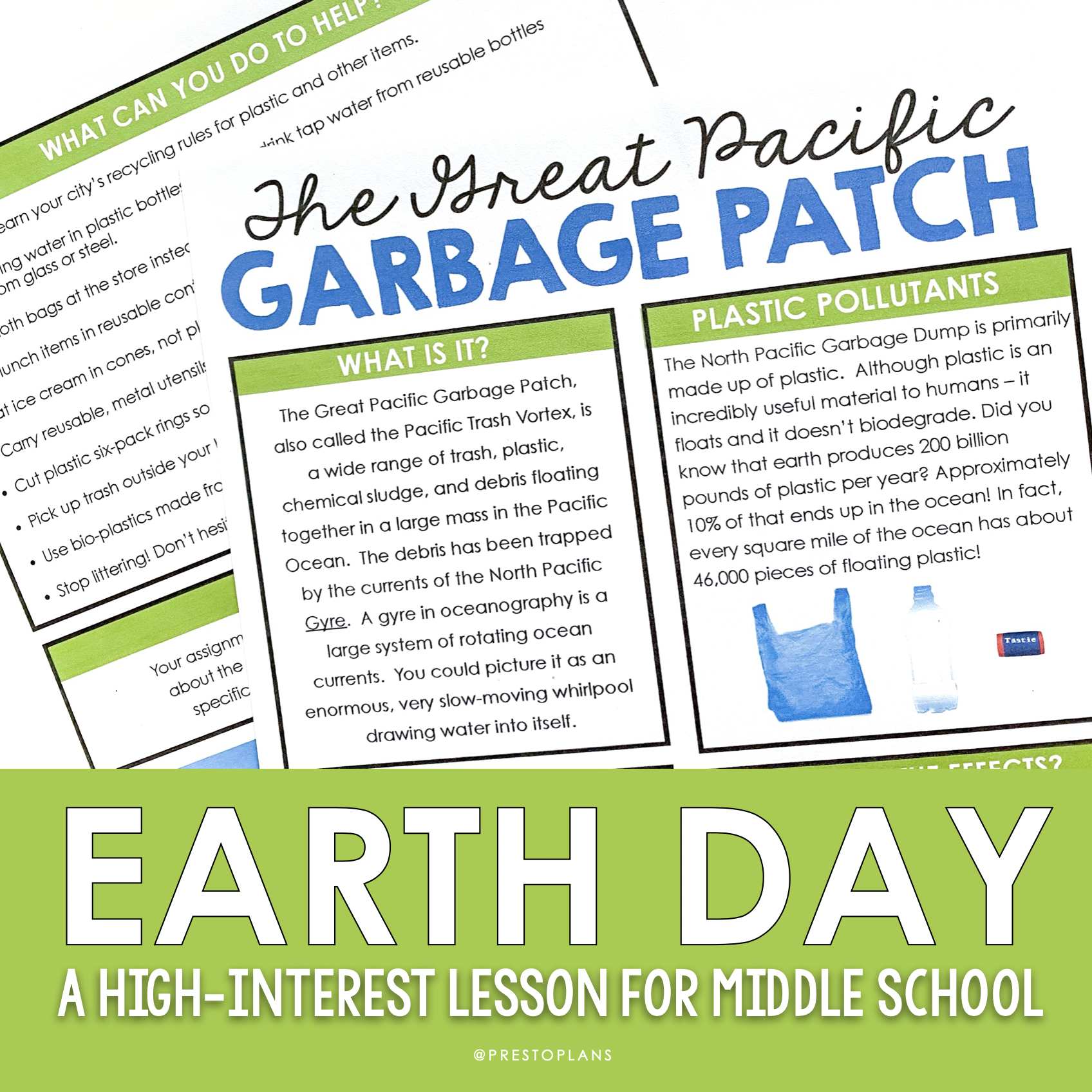
Earth Day Lesson for Middle School
If you’re looking for a creative Earth Day lesson for middle school ELA students, mid-April is a great time for your class to sharpen their research skills, and present their vision for a cleaner, greener planet. In schools, April 22 is a time of reflection and action, giving students and teachers the chance to share strategies and ideas to build a clean energy future and reduce global warming.
Personally, I have always been fascinated by the complex ecosystems in our planet’s oceans. I notice that many of my ELA students share this interest, too! One thing that really grabs their attention is the Great Pacific Garbage Patch – a collection of marine debris that some researchers think could be as big as (or even bigger than) the state of Texas!
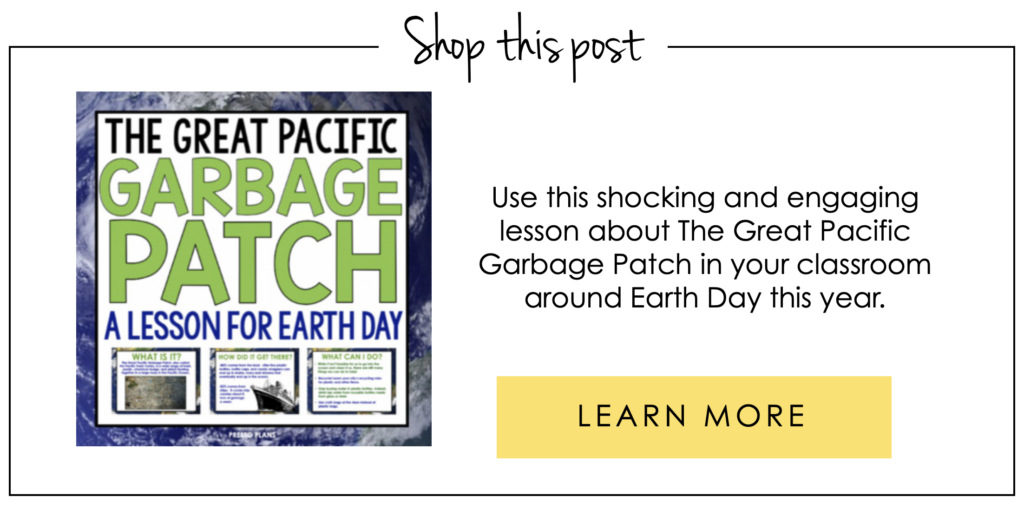
Lesson Purpose
I find that introducing the idea of a major environmental problem (like the Great Pacific Garbage Patch) is an effective way to kick-start an engaging class discussion. For this Earth Day activity, I begin by explaining that The Great Pacific Garbage Patch (also called the Pacific Trash Vortex) is a wide range of trash, plastic, chemical sludge, and debris floating together in a large mass in the Pacific Ocean.
If your students are anything like mine, they’ll likely get fired up about this huge environmental issue. This creates a natural opportunity for you to funnel your discussion from “big ideas” down to actionable tasks that students can take at home or school to protect the planet.
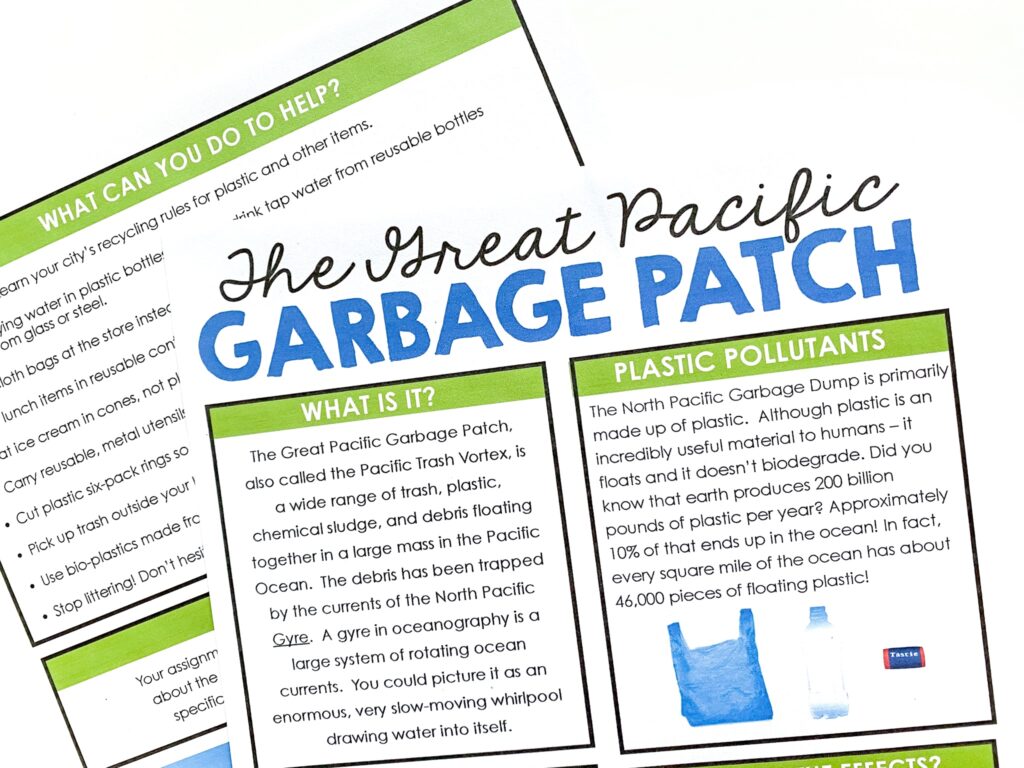
Materials
A lesson always goes more smoothly for me if I gather my materials ahead of time. Some markers and chart paper tend to work well for the collaborative activity! Alternatively, you could prepare a digital collaboration space (like a Jamboard or something similar) the day before your lesson.
Introduction
I like to begin my middle school Earth Day lesson by asking students some whole-class discussion questions. This gets them thinking about issues surrounding marine ecosystems and single-use plastics.
Depending on where you want to go with your discussion, perhaps start by asking a series of questions like these:
- Do you think that we should dispose of single-use plastics?
- What do you think is the biggest threat to ocean ecosystems?
- Have you ever heard of the Great Pacific Garbage Patch?
Instruction
From here, you’ll want to give some interactive instruction about the Great Pacific Garbage Patch. A slide show can help your students get a better understanding of the type and scale of the debris. In usually focus the teaching part of this lesson around four main questions:
- What is the Great Pacific Garbage Patch?
- How did it happen?
- What are the effects of single-use plastics on marine ecosystems?
- What is being done about the Great Pacific Garbage Patch?
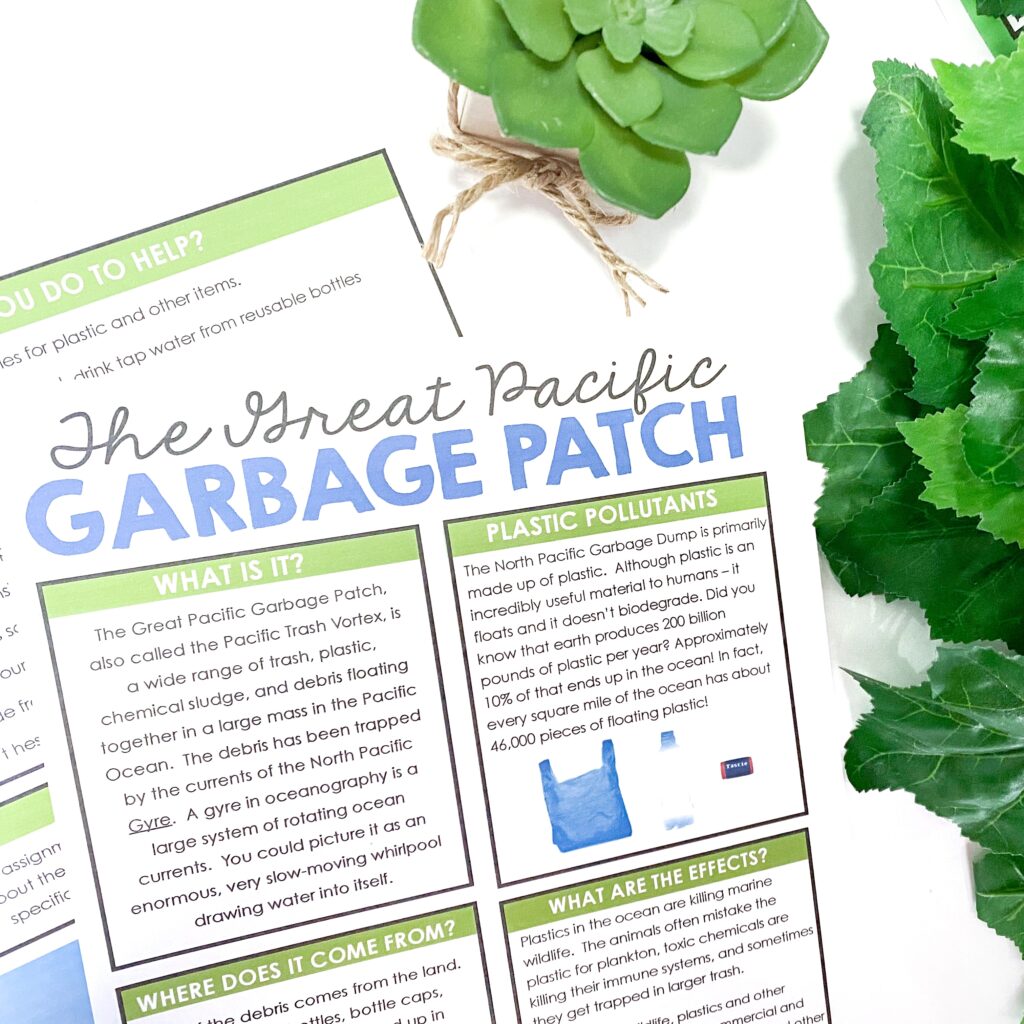
Video
Next, I show a video to help my students understand the size and scale of the Great Pacific Garbage Patch. After they view the video, it can be quite powerful for students to make the connection between the types of plastics in the Great Pacific Garbage Patch and the trash they generate at home or school.
This is a natural opportunity to invite student comments and discussion. I find they have quite a lot to say once they see the different types of products that contribute to marine waste on this scale.
Activity
Once I wrap up the discussion about the video, I break my students into groups and give each group some chart paper and markers. (You could also do the collaborative part of your lesson on computers, if you prefer.)
Next, invite each group to brainstorm as many ideas about creating more awareness about the Great Pacific Garbage Patch as they can. From here, they can then think of ways to reduce their personal plastic usage.
If your students are younger, you could instead focus on ideas about helping the environment in general, or help them identify strategies to protect marine ecosystems.
Assignment
Finally, wrap up your lesson by introducing your middle school Earth Day assignment. In this last stage, students design posters or brochures to spread awareness about single-use plastics and their environmental impact. They may need a few classes to complete this task.
As they create their finished products, your middle school students will use research and communication skills to share their understanding. They can also use their posters or brochures to identify opportunities to reduce plastic waste at home or school. These posters could be shared with other classes, or stapled to a bulletin board in the hallway to create learning opportunities for all students in your school!
Alternatively, if you have a “buddy” class of younger students, your middle school Earth Day lesson could provide an opportunity for the two classes to collaborate. To extend this activity, your students could even plan and host an environmental awareness assembly for your school.
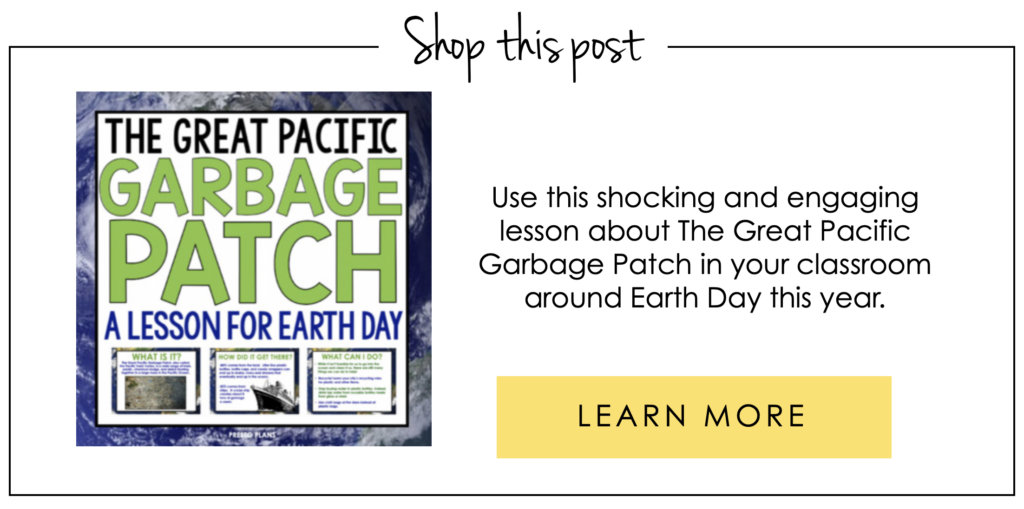
I hope that gives you plenty of ideas for creating a memorable Earth Day lesson for middle school!
Looking for more resources to improve class discussions in ELA? Click here.
Excited about nonfiction reading and research in your middle school ELA class? Check out my full-year nonfiction reading program!
Search the blog for what you are teaching
GIVEAWAYS
sent straight to your inbox!
share this post